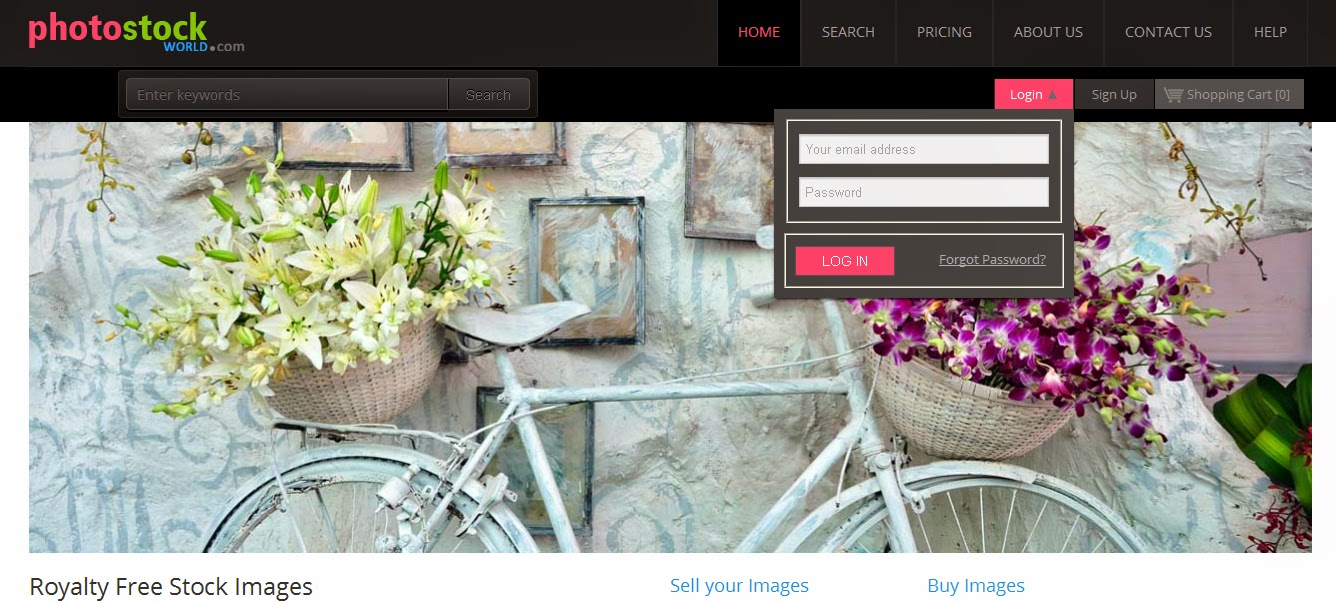Stock photography or microstock refers to images which are uploaded to the image libraries of any agencies, so that others can purchase them under strict or relatively flexible usage licenses. The photographer gets a commission for each sales they received for their images from those agencies.
Stock photography refer to selling images on your own website or on highly cost image agencies.
Whereas microstock photography are subscription based agencies who sells images in low costs.
Stock photography helps users who are in need of photos, can save time and money by not hiring a photographer. Every time you read a magazine or newspapers, textbooks, book covers, blogs, brochures, direct mail, or corporate literature of any type, and even when you watch TV and see stills incorporated into the program – you are probably looking at stock photography. ie. when anyone use images in their media, whether for marketing, creative or educational purposes comes from either of these two sources.
1) Whether they hire a photographer or 2) they purchase a pre existing image. When they are purchasing a pre existing image they are purchasing Stock Photography.
As stock photos are used commercially, they requires a certain level of quality and characteristics: The photos should have enough lighting, the persons clothes should be presentable enough, the person should be of good model quality, background should be good, the expressions on model's face should clearly evoke an emotion.
There are two basic licensing models for stock photography. The photographer decides which model to license their images under and the individual images become defined by how they can be licensed either as rights managed (RM) or royalty free (RF). A photo can never be both RM and RF. Royalty Free grants non-exclusive, unlimited use of an image, while Rights Managed grants exclusive, time-limited, and geographic-specific use. It is important to understand the intended use of a stock photo before choosing the license type. If it is for a small business running a local ad royalty free is the best solution. If it is for a high profile business it is better to prefer rights managed image to reduce the chance that a competitor may be using the same image.
www.photostockworld.com - It is a new website on stock photography dealing with Royalty-free stock images (not microstock images). As it is recently started, it is giving an offer of 30% as commission to photographers, to attract more photographers. ie 30% of the selling price of each of their images sold. For eg: If an image with size XXXL, which costs $50 is purchased by a user, then the photographer will get $15 as commission. All the images uploaded to photostockworld before this offer expires will get 30% commission for all its sales, as long as the image is active on photostockworld (even after the offer expires).
Stock photography refer to selling images on your own website or on highly cost image agencies.
Whereas microstock photography are subscription based agencies who sells images in low costs.
Stock photography helps users who are in need of photos, can save time and money by not hiring a photographer. Every time you read a magazine or newspapers, textbooks, book covers, blogs, brochures, direct mail, or corporate literature of any type, and even when you watch TV and see stills incorporated into the program – you are probably looking at stock photography. ie. when anyone use images in their media, whether for marketing, creative or educational purposes comes from either of these two sources.
1) Whether they hire a photographer or 2) they purchase a pre existing image. When they are purchasing a pre existing image they are purchasing Stock Photography.
As stock photos are used commercially, they requires a certain level of quality and characteristics: The photos should have enough lighting, the persons clothes should be presentable enough, the person should be of good model quality, background should be good, the expressions on model's face should clearly evoke an emotion.
There are two basic licensing models for stock photography. The photographer decides which model to license their images under and the individual images become defined by how they can be licensed either as rights managed (RM) or royalty free (RF). A photo can never be both RM and RF. Royalty Free grants non-exclusive, unlimited use of an image, while Rights Managed grants exclusive, time-limited, and geographic-specific use. It is important to understand the intended use of a stock photo before choosing the license type. If it is for a small business running a local ad royalty free is the best solution. If it is for a high profile business it is better to prefer rights managed image to reduce the chance that a competitor may be using the same image.
www.photostockworld.com - It is a new website on stock photography dealing with Royalty-free stock images (not microstock images). As it is recently started, it is giving an offer of 30% as commission to photographers, to attract more photographers. ie 30% of the selling price of each of their images sold. For eg: If an image with size XXXL, which costs $50 is purchased by a user, then the photographer will get $15 as commission. All the images uploaded to photostockworld before this offer expires will get 30% commission for all its sales, as long as the image is active on photostockworld (even after the offer expires).

